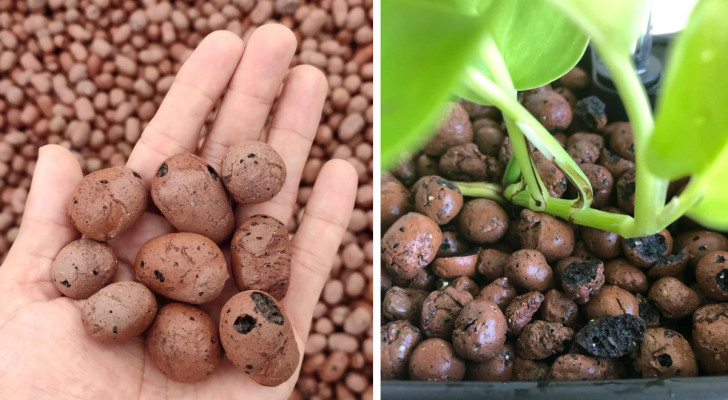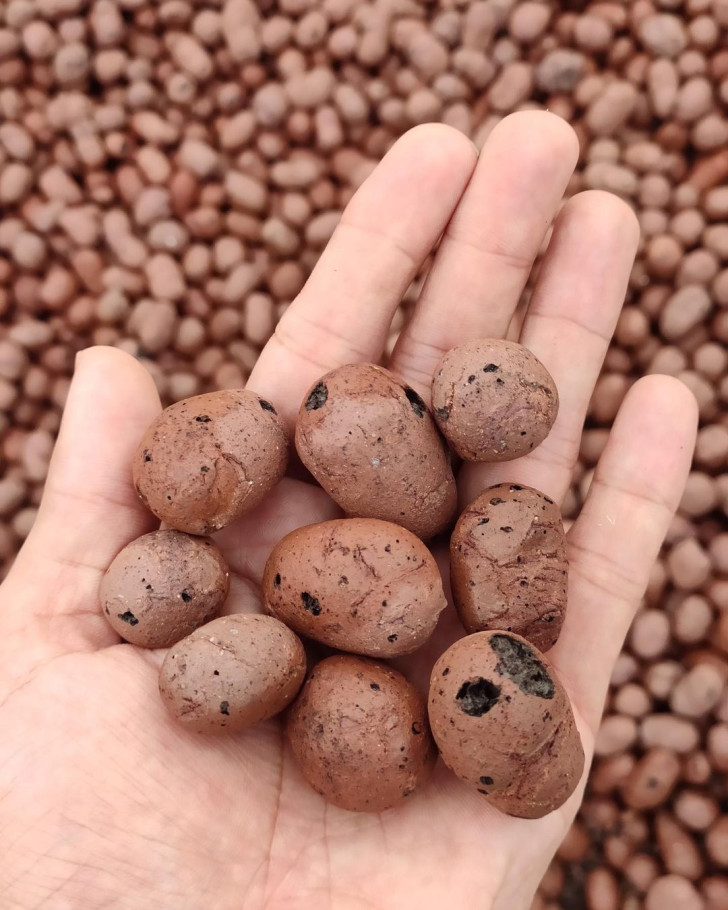Expanded clay: 5 pros and 5 cons to using this product for your plants

Expanded clay is a very popular as a growing medium in large-scale hydroponic cultivation as well as for many houseplants. This product (which comes in pellet form) is composed of clay, brick dust and natural clay minerals and is a cheap, eco-friendly and sustainable product in which to grow your houseplants.
Some plant species are more suited than others to cultivation in expanded clay - plants that are drought-resistant and have strong root systems are particularly recommended. Among these types of plants, the most common are orchids, philodendrons, monsteras, alocasias, hoyas, begonias and jades.
Plants with more sensitive roots and that need more water and fertilizer than those listed above need to be grown with care in expanded clay. Examples include: rosary plants, pothos, ferns, marantas and stromanthes.
So let's check out 5 pros and 5 cons of using expanded clay as a plant cultivation medium:
Benefits of using expanded clay as a cultivation medium

Expanded clay can have numerous benefits for your houseplants:
- Better drainage and irrigation: expanded clay allows excess water to drain away quickly, avoiding problems related to stagnant water; the size of the expanded clay pellets also helps aerate the soil, promoting healthy root growth; absorbing water, the clay pellets swell up and release the water a little at a time, reducing the need for watering;
- Better transport of nutrients: in addition to water, nutrients can also be transported in expanded clay more easily, allowing the roots to more easily, and adequately, tap into this vital resource;
- Protection from parasites: expanded clay does not contain decaying organic material and so, will not attract parasites like aphids, harmful fungi and midges;
- Convenient and clean: expanded clay requires less space to store and, after an initial soaking, does not produce dust or cause messy spills when watering or moving the plant pots;
- Long-lasting and reusable: the expanded clay pellets are highly durable can be reused even after repotting aplant; the pellets are also reusable for different plants - after having carefully washed and cleaned them.
Possible disadvantages of using expanded clay as a cultivation medium

Like anything, using expanded clay does have some disadvantages you need to take into account:
- Initial cost: the initial cost of converting your cultivation "enterprise" to using expanded clay may be significant. That said, you can recoup your inital investment over time due to the reusability of the pellets;
- Preliminary cleaning: unlike soil, expanded clay is not immediately ready for use when you purchase it. The pellets must be carefully washed before use to eliminate dust and any other impurities; this cleaning operation should also be done when reusing the pellets for other plants;
- pH monitoring: Growing plants in expanded clay requires the constant monitoring of the quality of the water and the pH levels to ensure they remain within acceptable ranges;
- Fertilizing: unlike soil, expanded clay does not provide any nourishment to plants, so fertilizers must be use (increasing your start-up and ongoing costs);
- Drainage holes: when using expanded clay, the pots it is placed in must not have any drainage holes; the pellets absorb, then release, the water you give the plant and must not drain away.
What is your favorite cultivation medium? Potting soil or expanded clay?